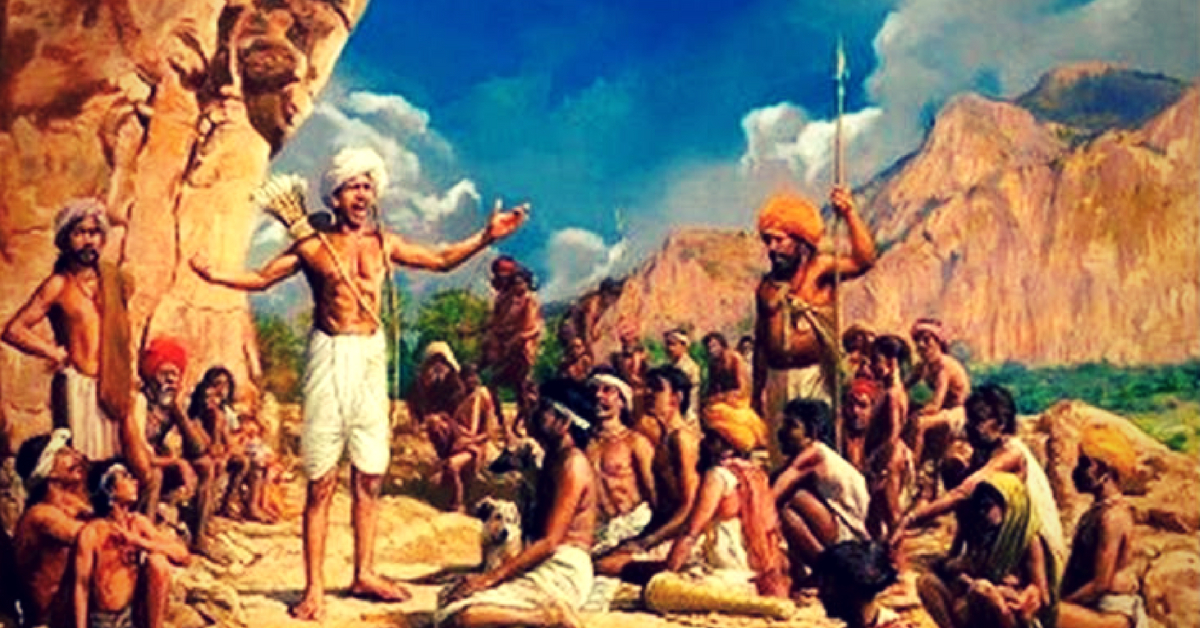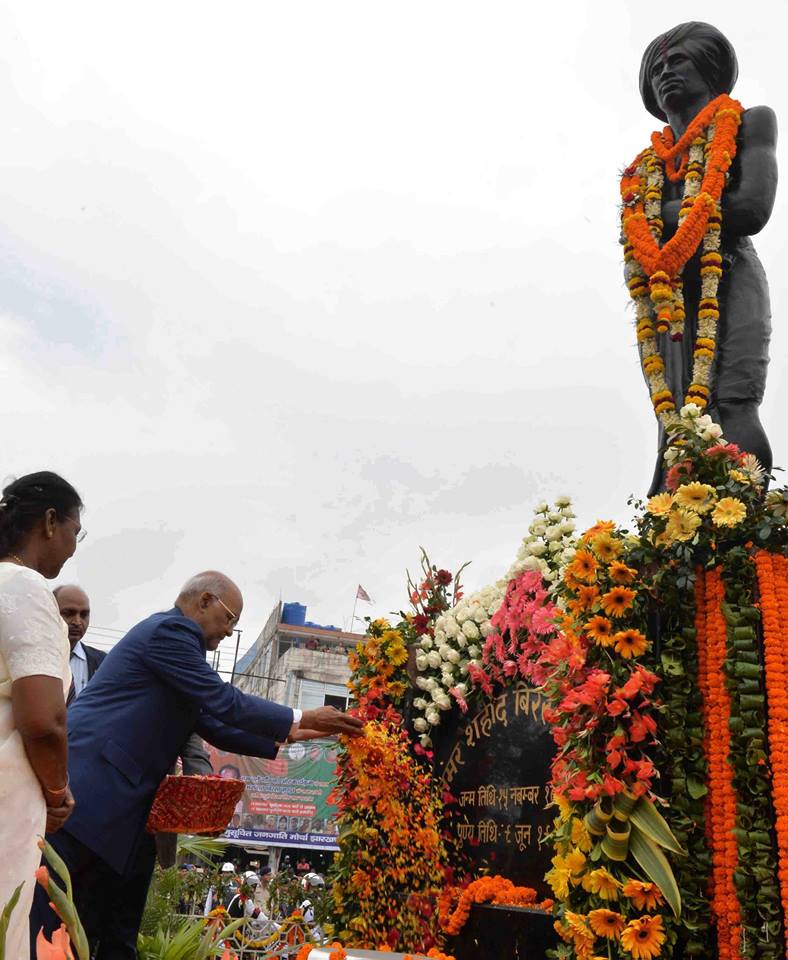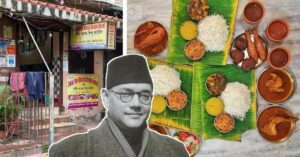Birsa Munda, the Tribal Folk Hero Who Gave the British Sleepless Nights!
He is the only tribal leader whose portrait hangs in Parliament today.

There is a certain malleability attached to the phrase ‘freedom struggle’. For many Indians, the phrase refers to their long struggle for Independence against British colonial rule. This was a movement which brought together Indians of many hues on one common platform.
Nonetheless, there were Indians who also asked tough questions of the freedom struggle and the direction it took. Yes, freedom from the British was an eminently desirable outcome, but what about freedom from social and economic exploitation? The likes of Rabindranath Tagore and BR Ambedkar were among the most prominent personalities who asked these difficult, yet necessary questions.
Long before they arrived on the scene, and a few decades before Mahatma Gandhi and Bhagat Singh made their presence felt in the freedom struggle, there was Birsa Munda, a tribal revolutionary who frightened the British colonialists.
This revolutionary from the forest lands of the Chota Nagpur Plateau in present-day Jharkhand is the only tribal leader whose portrait hangs in Parliament.
He was only 25 when he died in the custody of British authorities in the Ranchi Central Jail. Since Independence, the Indian Republic has claimed Birsa as one of its own.
Born on November 15, 1875, in a small village of Ulihatu in Kunti district, Jharkhand, this revolutionary of the Munda tribe studied in a missionary school for a brief while before he quit. It was on the advice of his teacher Jaipal Nag that Birsa converted to Christianity. Only if he converted, could he join the German Mission School, an idea that had a profound impact on his later struggle.
“The impact of Christianity was felt in the way he came to relate to religion later. Having gained awareness of the British colonial ruler and the efforts of the missionaries to convert tribals to Christianity, Birsa started the faith of ‘Birsait’. Soon, members of the Munda and Oraon (tribal) community started joining the Birsait sect, and it turned into a challenge to British conversion activities,” says this Indian Express profile on the revolutionary.
It was the five years he spent in Chaibasa town of West Singhbhum district in modern-day Jharkhand, which left an indelible imprint on a young Birsa. Close to the heart of the Sardars agitation, the lesson a young Birsa took away is how the British wanted to overrun local tribal communities through a combination of government-sponsored exploitation and missionary work.

As a result, in 1890, Birsa quit the German Mission School, gave up Christianity and reverted to his traditional tribal faith.
When he left Chaibasa in 1890, Birsa found himself immersed in a full-time struggle against British colonialists. What he also saw was how the British rule had devasted the ways and lives of the Santhal and Munda tribes by introducing rent payment for the land and taxes on the produce.
In bed with the British were the local Zamindars, who were able to grab vast swathes of tribal land. By some accounts, a few of these Zamindars owned as many as 150 villages, while the Mundas and Santhals ended up becoming their bonded labourers.
Also Read: These Adivasi Women Are Eliminating the Practice of Witch Hunting – One Performance at a Time
Responding to the gross exploitation of his people, Birsa and his band of loyal followers began “Ulgulan” (The Great Tumult) or the rebellion against the British colonialists.
The movement sought to assert the rights of the Adivasis as the real owners of the soil, and the expulsion of Zamindars and the British. Marked by a series of concerted guerrilla-style attacks on the British, the rebellion claimed the lives of many of its police officers.
It all kickstarted in October 1894, when Birsa mobilised a protest march for remission of forest dues that the local Zamindars collected. Forest produce, he believed, belonged to the Adivasis.
What this did was bring other tribes like the Oraon, Mundas and Kharias on one platform. He also advised them to boycott the exploitative practices of the Zamindars and British backers. He was imprisoned for two years at the Hazaribagh Central Jail for his actions.
After his release, Birsa and his followers stepped up their attack against the British.
“In August 1897 Birsa Munda along with 400 of his men armed with bows and arrows, attacked the Khunti Police Station. In 1898, on the banks of the river Tanaga, the Mundas faced a British force which they initially defeated. Further action of the British, however, resulted in the arrest of many men and women,” says this Indian Post tribute.
However, his struggle was not just against the British, but also the ignorance in his community. He sought to rid the Munda community of superstition, animal sacrifice and alcoholism.

“Known as ‘Dharti Abba’ or the Earth Father, Bisra Munda stressed on the need of the tribals to study their own religion and not forget their cultural roots. He influenced his people to realise the importance of owning their land and asserting their right upon them,” says this India Today profile.
The British responded to this rebellion with brutality, while discrimination and exploitation against local tribal communities only increased. For example, in 1900, the British laid siege to his followers camping at Dumbari Hills, firing indiscriminately. Hundreds died in the attack.
A few months later, he was unfortunately captured by the British. He was fast asleep in the Jamkopai forest near Chakradharpur town when the British picked him up.
After enduring brutal torture in prison, Birsa passed away on June 9, 1900, although British authorities claim that he died of cholera. Eight years after his demise, however, the British enacted the Chota Nagpur Tenancy Act, which restricted the sale of Adivasi land to non-Adivasis.
It’s impossible to encapsulate the legacy he left behind. Nearly every major institution of note in Jharkhand is named after Birsa Munda—the airport, the athletics stadium, and ironically even a Central Jail.

The village of his birth, Ulihatu, has become a pilgrimage site. Even the state of Jharkhand, carved out of Bihar, was born on his birthday, November 15.
“The British tenancy laws (e.g. the Chota Nagpur Tenancy Act) were an attempt to stop the alienation of Adivasis’ land, but post-Independence, state governments diluted their provisions,” writes Dayamani Barla, an award-winning Adivasi activist, for Scroll.in.
Also Read: Long Before #MeToo, This 19th Century Feminist Challenged Caste and Patriarchy!
Is this the freedom Birsa fought for?
The history of tribal communities in India post-Independence is replete with stories of exploitation and denial of access to basic amenities. So yes, Birsa Munda was an exceptional freedom fighter who took on the British. However, he entered this protracted battle so that the Mundas and other Adivasi communities could reclaim ownership of not just their resources but their way of life.
He gave up his life for it. Have we truly honoured his legacy?
(Edited by Shruti Singhal)
Like this story? Or have something to share? Write to us: [email protected], or connect with us on Facebook and Twitter.
NEW: Click here to get positive news on WhatsApp!

Similar Story

Netaji Bose’s Favourite Eatery Has Been Serving Traditional Delicacies for Over 100 Years
The Swadhin Bharat Hindu Hotel in Kolkata, started by Mangobindo Panda, is a century-old pice hotel where Indian freedom fighters like Netaji Subhas Chandra Bose would enjoy Bengali delicacies.
Read more >
If you found our stories insightful, informative, or even just enjoyable, we invite you to consider making a voluntary payment to support the work we do at The Better India. Your contribution helps us continue producing quality content that educates, inspires, and drives positive change.
Choose one of the payment options below for your contribution-
By paying for the stories you value, you directly contribute to sustaining our efforts focused on making a difference in the world. Together, let's ensure that impactful stories continue to be told and shared, enriching lives and communities alike.
Thank you for your support. Here are some frequently asked questions you might find helpful to know why you are contributing?


This story made me
-
97
-
121
-
89
-
167












